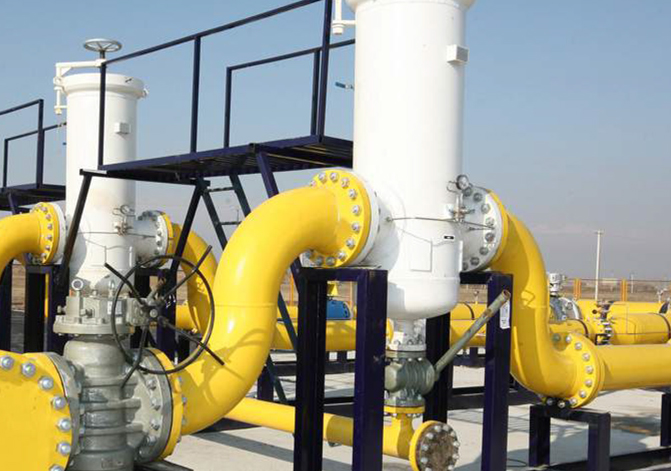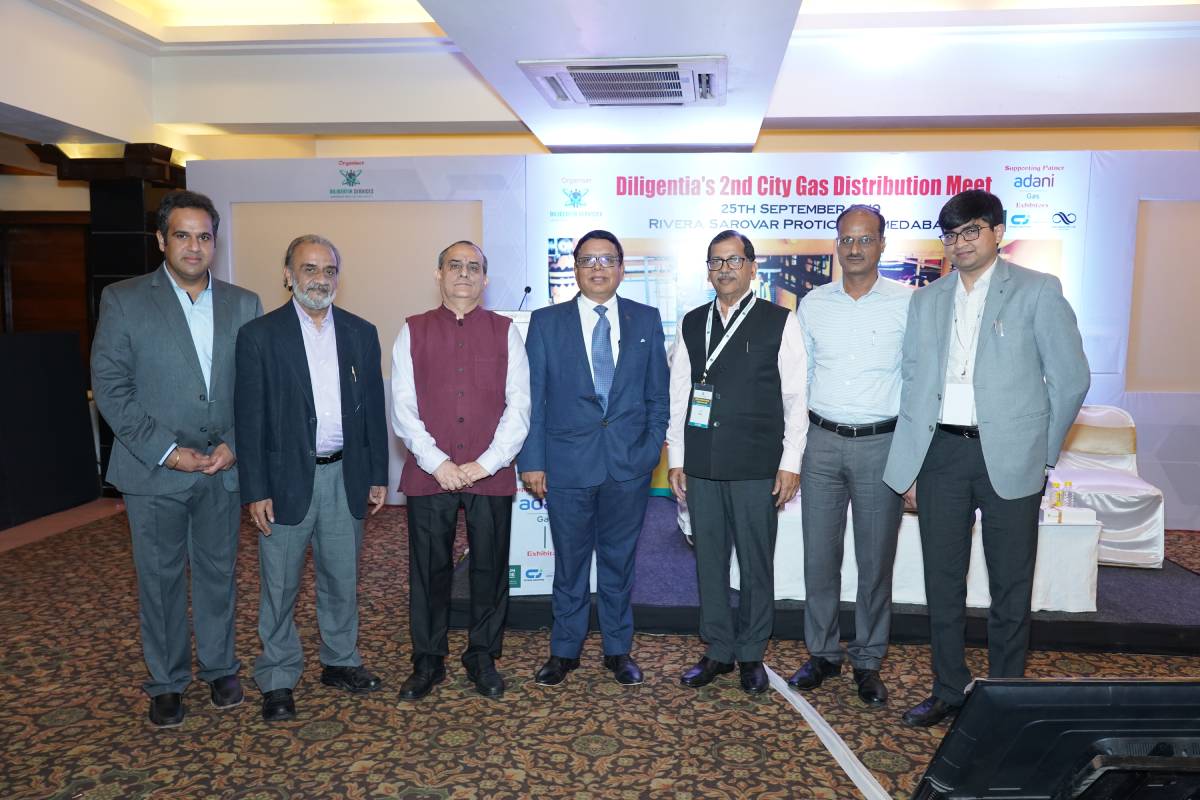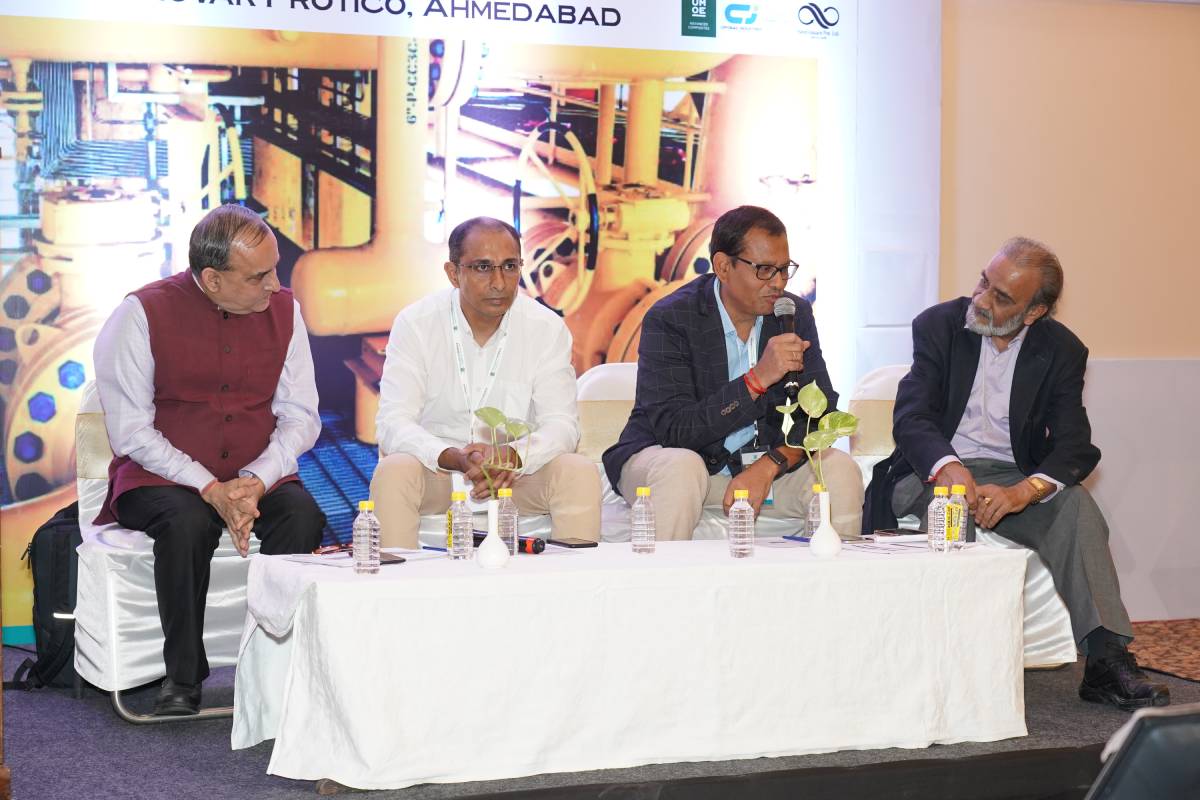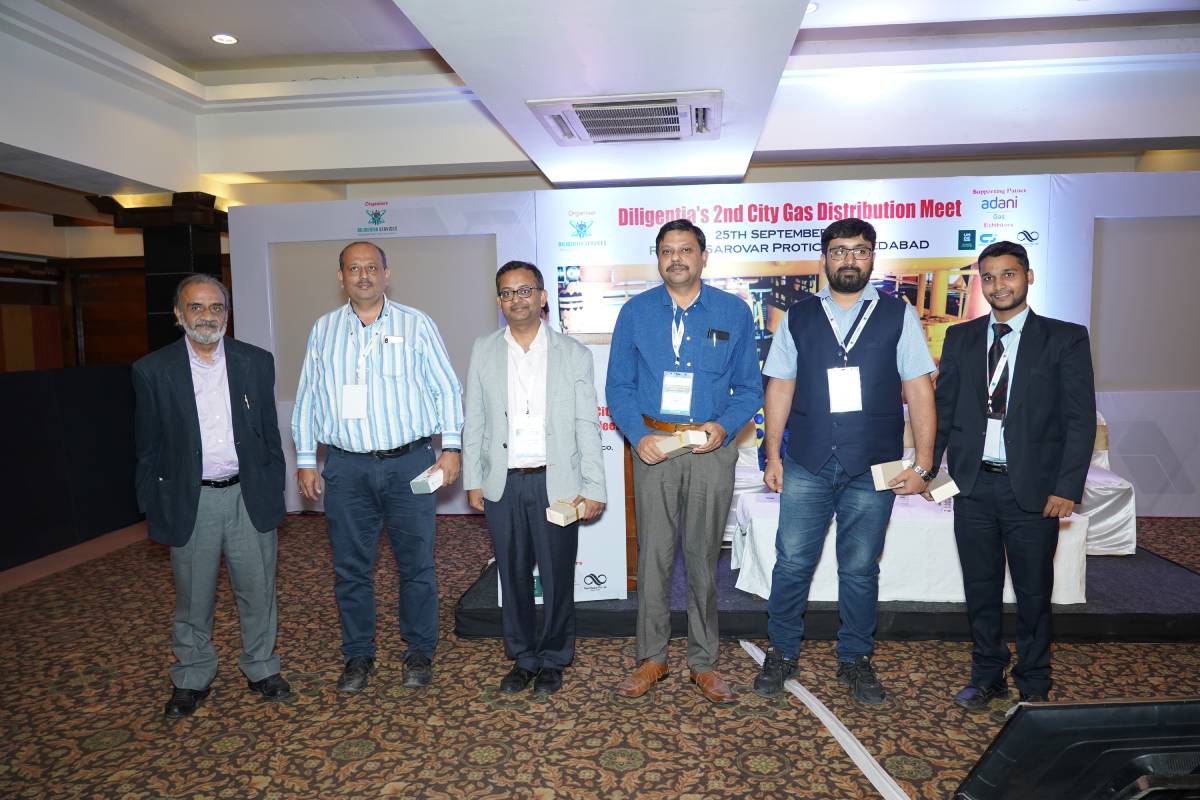Annual CGD Conclave 2023
Introduction

Since its inception more than one-and-a-half decade back, the midstream and downstream oil & gas regulator PNGRB, has ensured amongst its many mandates, the rapid and effective spread of the CGD network in India. More than 5,700 CNG stations, domestic PNG connections exceeding 11 million, 38,000 Commercial CNG connections, and almost 17,000 Industrial PNG connections: these are the statistics that define the massive growth across all the segments of the fast-growing City Gas Distribution (CGD) sector in India. After the completion of XIth round for CGD bidding, almost 98% of the country’s population, across 630 districts, covering almost 90% of total geographic area of India, has been placed on the CGD network; cutting across 295 Geographic Areas (GAs). Already several Tier-III cities have been successfully placed on the CGD map of India as well. CGD sector now accounts for more than one-fifth of total natural gas consumption in India. As India aims at increasing the share of natural gas in the energy basket to 15% by 2030, from the current level of 6%, there is a huge market to be tapped in the CGD sector.
Imported gas in the form of LNG now accounts for almost 50% of gas consumption in India. Gas importing companies are now seeking a deviation from reliance on spot LNG markets. Pursuits for long-term contracts for LNG imports will create the much-needed room for lesser price volatilities for the end-consumers. Coupled with the capital investments in trunk pipelines, the CGD sector is firmly placed for massive growth in the coming years ahead. The North-East region in India remains an untapped market for CGD operations and will be pick-up with the expanding network of cross-country pipelines across Eastern and North-Eastern parts of India.
As the CGD market expands, digitalization initiatives are expected to pick-up fast as well. There will be a huge market for data capture and analysis; to initiate predictive maintenance, technical support, leading to better business decisions and sustain a robust CGD infrastructure. Applications for data capture, IoT, AI, ML; along with related software and hardware applications, will attract a lot of attention and investments from niche equipment manufacturers, as the CGD sector grows from here on. Successful data-based models will emerge with the bottom-line approach on how to serve the end-consumers better.
The CGD sector will also see a great demand build-up for consumption of Green Hydrogen. A successful case here is the implementation of Green Hydrogen blending in the PNG network in Kawas, Gujarat, by NTPC in association with Gujarat Gas. A 5% volume-to-volume blending of Green Hydrogen with PNG is a laudable step to start with. H-CNG buses will also pave the way for consumption of Green Hydrogen within the CNG network. There is also a tremendous untapped scope for a lot of small scale CGD applications such as gas based gensets, gas-based water heaters and space heating. It is understood that natural gas has the potential for replacing LPG and electricity within the CGD sector.
Natural Gas storage has now once again been seen as a possible solution to circumvent the challenges faced due to possible geo-political disturbances. This subject would need greater participation, technical and geological studies, investments and thought process from the concerned stakeholders; be it the pipeline operators, gas fields operators, regulators, and the Government alike.
Speakers
Sh. Dk Sarraf
former Chairman PNGRB
Sh. Rajeev Mathur
Director Haryana City Gas
Sh. Kapil Kumar Jain
COO Gail Gas
Sh. Rajesh Medirattta
CEO IGX
Sh. Bhashit Dholakia
COO IOAGPL
Sh. Rajiv Sikka
Sr VP Megha City gas
Sh. Rajeev Kumar
CMO Indraparstha Gas Ltd
Sh. Ravishankar Sundaresan
CEO Alethe Labs
Sh. Asim Prasad
CGM Gail India Ltd
Sh. Sunil Kumar Jha
DGM Gail Gas
Sh. Dhirendra Kumar
DGM IOCL
Sh. Shireesh Swamy
Sr. GM TCE
Dr. Atul Rawat Associate
Proff. UPES
Sh. Manan Shah
Director Ambetronics
Sh. Jitendra Singh Rathore
CEO Gastech
Sh. Rajan Varshney
DGM NTPC Ltd
Sh. Tanuj Sharma
Feedback Infra
Sh. Vinay Dixit
Itron Meters
Preliminary Program
Organisers: Diligentia Services
Knowledge Partners: Feedback Infra
S.No. |
Topic for discussion |
I |
Introduction by Diligentia Services Team |
II |
Short speech by Knowledge Partners: Feedback Infra |
| Session I: CGD Market in India
|
Introduction |
CGD as an integral part of India’s Energy Mix |
1 |
Evaluation of CGD Market size for India
- What does long-term CGD Market looks like
|
2 |
CGD Regulations
- Understanding the evolving Regulatory Regime
|
3 |
Financing CGD Projects in India
- Experiences and Achievements
|
4 |
Role of Gas Exchanges in CGD Market
- Benefits and Case Studies
|
5 |
Small scale CGD Market
- Evaluating the potential for Gas gensets, water heaters, and space heating
|
Tea Break and Networking Session: 20 minutes |
| Session II: Digitalisation - Utilizing Data to Manage CGD Markets better
|
6 |
The scope for equipment suppliers in Futuristic CGD Market
- Enabling IoT, data capture, software and hardware Market
|
7 |
Applications of Smart Meters in CGD
- Generating the data from CGD Operations
|
8 |
Applications of AI and ML in CGD Markets
- Putting the CGD data to better use
|
9 |
Need for Cybersecurity in CGD Operations
- Protecting the Integrity of Data
|
Lunch Break: 45 minutes |
| Session III: Key Stakeholders enabling the CGD Market
|
10 |
LNG as an Integral part of CGD Market
- The Road ahead for LNG in India
|
11 |
What lies ahead for Natural Gas Transmission Pipelines
- A view of the enabling Infrastructure towards success of CGD
|
12 |
Managing the Customer expectations in CGD
- Addressing the softer side in the fast-pacing CGD Market
|
| Session IV: New Paradigm in Natural Gas Market in India
|
13 |
Potential for Green Hydrogen in CGD
- Impediments and Enablers towards Green Hydrogen blending in CGD
|
14 |
Natural Gas Storage
- What lies ahead: Necessity & Possibilities for India
|
15 |
Group Discussion on Natural Gas Storage
|
Close of proceedings
Proceed for Tea and Networking Session |
Supporting Association

Natural Gas Society
The Natural Gas Society (NGS), a registered body, is the emerging voice of the Indian natural gas industry and has been established to catalyse the development of the industry. NGS seeks to establish itself as an industry think tank and provide critical inputs into sectorial policy through research, collaboration and dialogue. It will also work towards the enhancement of India's natural gas industry's competitiveness in global energy markets. NGS will provide a forum for exchange of ideas and best practices for the Indian gas industry, especially in the transmission and distribution segments of the gas value chain.
NGS also supports the optimisation of resources and continual improvement of safety and service aspects of the entire gas chain keeping the interests of all stakeholders in mind, through the promotion of development, application and transfer of new technologies and best practices. It aims to strategically popularise extensive use of natural gas and attract investment into the sector.
Media Partner
LNG One World

LNG OneWorld, a wholly owned subsidiary of Drewry Shipping Consultants, is an established brand within the LNG market place. LNG OneWorld for over a decade has been providing the industry professionals with rich and in-depth coverage on the LNG value chain helping them keep abreast of the trends in the industry. It provides latest news, editorials besides latest trade and shipping data. With strength of over 8,000 registered members across the world, LNG OneWorld contributes to help make better trading and investment decisions. LNG OneWorld’s subscriber base includes oil & gas majors, shipowners, shipyards, terminal operators, traders, risk managers, analysts, and industry leaders. To be a part of the LNG family and actively participate in the live discussion forums on the latest LNG issues all are welcome to register on www.lngoneworld.com
Supporting Partner
Indoruss Synergy Pvt Ltd

INDORUSS SYNERGY PVT LIMITED, New Delhi , as Cooperation associates of JSC RT-Chemcomposite, presents Type 4 composite cylinder based cascades and Modular-mobile Filling Stations (MMFS) for transportation , storage and filling of CNG, HCNG and Bio CNG in India.
Our Sponsor
Ambetronics Engineers Pvt. Ltd.

Ambetronics Engineers Pvt. Ltd. is a leading ISO 9001:2015 Certified manufacturer, exporter, and supplier of electronic equipment in the fields related to industrial safety and automation equipment. We are well specialized in customizing and integrating our systems with our Client’s existing applications and processes as per the requirements at the site.Our range of manufactured instruments can be broadly categorized into Gas Detection Systems, Process Instrumentation systems, Data Acquisition systems, Cold Chain Monitoring Equipment, Clean Room Monitoring Equipment, Vibration Monitoring, etc. Our recent add-ons are Wireless Gas Detection Systems and Wireless Temperature Humidity Data Logger / Monitoring Systems which work as IoT devices by integrating the Cloud-based Internet of Things Technologies using our own manufactured Ethernet to RS485 data converters for remote data monitoring and controls.We have proven professional expertise to provide and execute complete turnkey solutions from design to installation, commissioning & handing-over of other supporting equipment along with our range of products, customized as per our Client’s requirement, and supported with an efficient service-after-sales base. Additionally, we are also an importer and supplier of few specific products like Gas Sensors, High Speed Data Loggers, Vibration / Inclination sensors, etc. from countries like Germany, Poland, Italy, Canada, etc.
GasTech Systems Private Limited

GasTech a market leader in Dual Fuel Systems is a green energy startup promoting the use of natural gas for Internal Combustion (IC) Engines. The company is headquartered in Bengaluru. Our R&D is in close collaboration with IISc Bengaluru. Our offices are in Gurugram & Pune for providing services pan India.
GasTech Systems Private Limited, offer NG based Dual fuelling solutions; an innovative retrofit technology that allows liquid fired engines to operate on a mixture of liquid fuel and Natural Gas. We have special expertise in Dual Fuel (Diesel+ Gas) solutions for power generation and transportation.
GasTech supplies DFK for stationary power generation in India where natural gas is available in any form.
We have long years of experience in Diesel engines and Dual Fuel technology, deep knowledge of sensors, electronic controllers and Cloud technologies powered by IIoT focused digital transformation.
Indian Gas Exchange Ltd. (IGX)

Indian Gas Exchange Ltd. (IGX) is India’s first automated national level trading platform to promote and sustain an efficient and robust Gas market and to foster gas trading in the country. The platform features multiple buyers and sellers to trade in spot and forward contracts at designated physical hubs. IGX is a neutral and transparent market place where both buyers and sellers will trade Gas as the underlying commodity. The contracts traded at IGX are for compulsory specific physical delivery and settlement of the trade are subject to the condition that such contracts are non-transferable in nature and without any netting-off thereby. IGX enables efficient and competitive discovery of gas prices and one of its most important objectives is also to maintain market integrity.
Organisers
About Organisers

Yes We Can Academy / Ceresta Centre for Energy:
Our Academy aims to bridge the gap in the energy and infrastructure domain and groom positive leaders who are confident in their knowledge domain, progressive in their thinking and competent in getting things done, with a power to lead through inner mind strength. The Academy’s focus will be on Transformation than Training
Behavioural - Domain - Peripheral Model: Our Programmes are offered under the BeDoPe Model – covering Behavioural, Domain (Energy Sector Knowledge) and Peripheral facets of leadership development. Our Energy Domain programmes will be offered under our vertical - Ceresta Centre for Energy
Our Consulting focus is on the Energy and Infrastructure domain with sectoral consulting spanning gas business and technical areas, leading good companies to achieve greatness, Organisation History – tracking the history of organisations and presenting a Coffee Table Book, and surveys on Project Maturity Index, organisational maturity Index, customer satisfaction index and employee engagement index.
Feedback
It was very nicely organised event considering so many presentations,
Very interesting topics and excellent arrangements,
Kudos,
Shiv Narayan Pareek – TCE
Very Well organized Conference .such events are fruitful for corporates and stakeholders.
Anil Kumar – IOCL
Smooth Management and knowledgeable sessions.
Anurag Singh - HPCL















